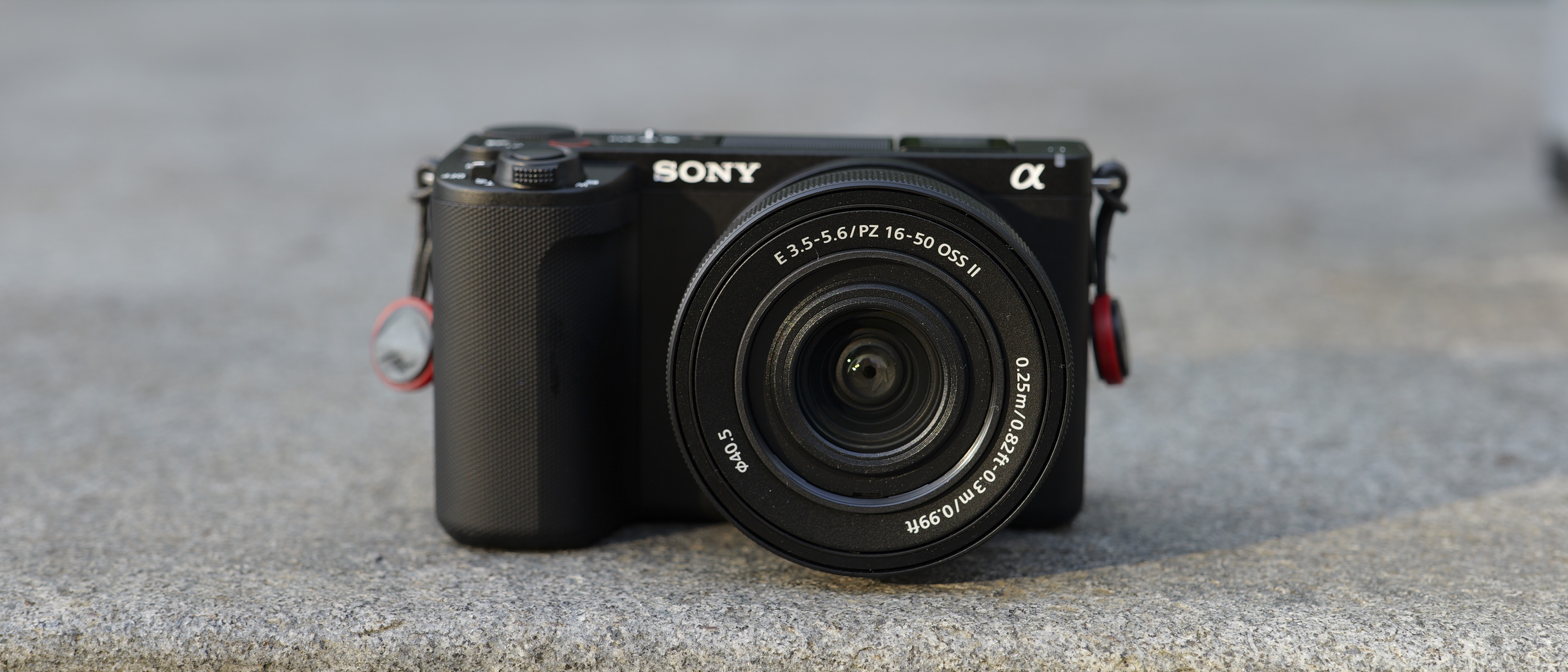TechRadar Verdict
The Sony ZV-E10 II is an immediately attractive package that exudes quality through its ultra-compact, sleek, but sturdy build. The camera shares the same 26MP BSI APS-C sensor as the highly capable A6700 and Sony FX30, including their comprehensive 759-point phase detection autofocus system, and it takes a big step up in video, offering 10-bit video in up to 4K/60p 4:2:2, bringing it in line with the competition. We also see Sony jumping on the current trend of enabling users to add their own LUTs / picture styles to the camera. However, the camera comes with a significant hike in price over the original ZV-E10, putting it closer in price to cameras that offer additional features like an EVF, higher-frame-rate 4K video, and faster burst-mode shooting.
Pros
- +
Superb 4K/60p 4:2:2 10-Bit video
- +
Best-in class autofocus
- +
Good integration with smartphone functionality
Cons
- -
Overheats after 24 minutes when shooting 4K/60p
- -
No viewfinder
- -
Poor stabilization means footage has to be corrected in desktop software
Why you can trust TechRadar
Sony ZV-E10 II: two-minute review
The ZV-E10 II is a highly recommendable compact vlogging camera. Its diminutive size is deceptive, as it houses a number of key components and features that are shared with Sony’s pricier and more advanced APS-C cameras.
This camera is built around the proven 26MP Exmor R sensor and BIONZ XR imaging engine combo, which is capable of producing crisp 4K video from an oversampled 6K readout. One of the biggest upgrades over its predecessor is that the ZV-E10 II is capable of recording videos in XAVC HS/XAVC S 10-bit 4:2:2 color up to 4K/60p with a data rate of up to 200Mbps. To take advantage of its dynamic range and color upgrade, it also comes with S-Cinetone and Log recording, along with the ability for users to upload a maximum of 16 LUTs via the Creators’ App, which can be baked into footage for quick delivery. It’s a much less elegant approach to deploying custom looks compared to Fujifilm’s famous film simulations or Panasonic’s seamless Real Time LUT and LUMIX Lab solution, but it’s a welcome addition to Sony’s entry-level offering all the same. It can also record proxy files in XAVC HS HD or XAVC S HD with a max data rate of 16Mbps, despite only having a single UHS-II card slot. The ZV-E10 II offers a strong set of features for what is ostensibly a beginner/vlogging camera.
However, considering that it’s built around the same sensor, processor and power platform as the A6700 and FX30, it’s a shame that Sony wasn’t able to include the 4K/120p video recording that’s available in those cameras, even if it came with a time limitation and the same 1.58x crop. It’s also disappointing to see that the mechanical shutter in the ZV-E10 has been ditched, meaning the ZV-E10 II is electronic shutter only. But with that said, the readout speed is fast, which will significantly negate the impact of rolling shutter in both video and stills. In terms of stabilization, the camera body has no sensor-shift IS, so you’re restricted to Optical Steady Shot (Standard) with compatible lenses or Active SteadyShot, which comes with a hefty crop. Alternatively, you can take advantage of Sony’s free Catalyst Browse desktop software, which uses gyroscopic metadata for the camera to stabilize your footage and reduce rolling shutter effects even further. The software works incredibly well, but it’s an extra step that some may find tedious, especially some people in the target audience for this camera.


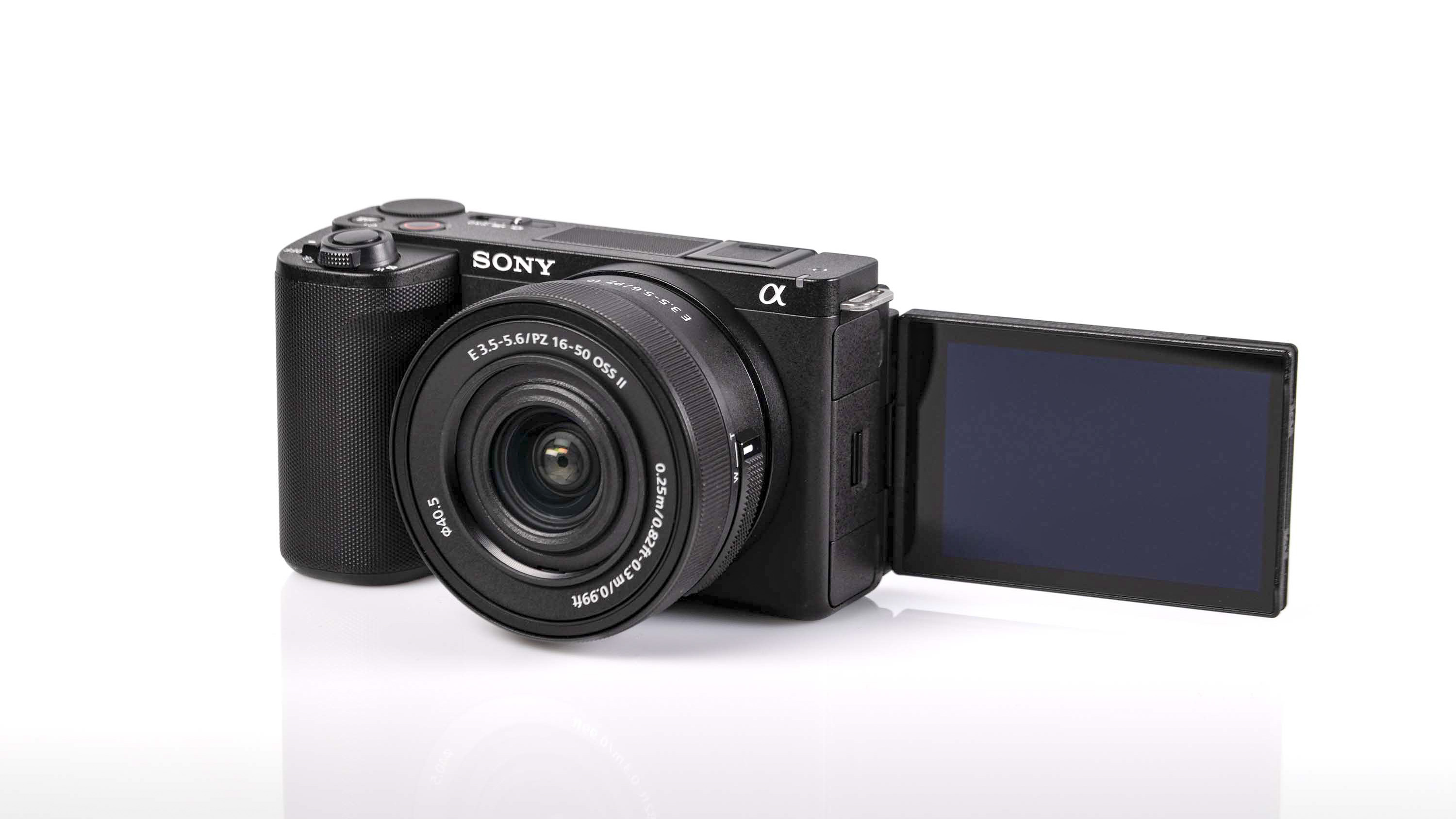

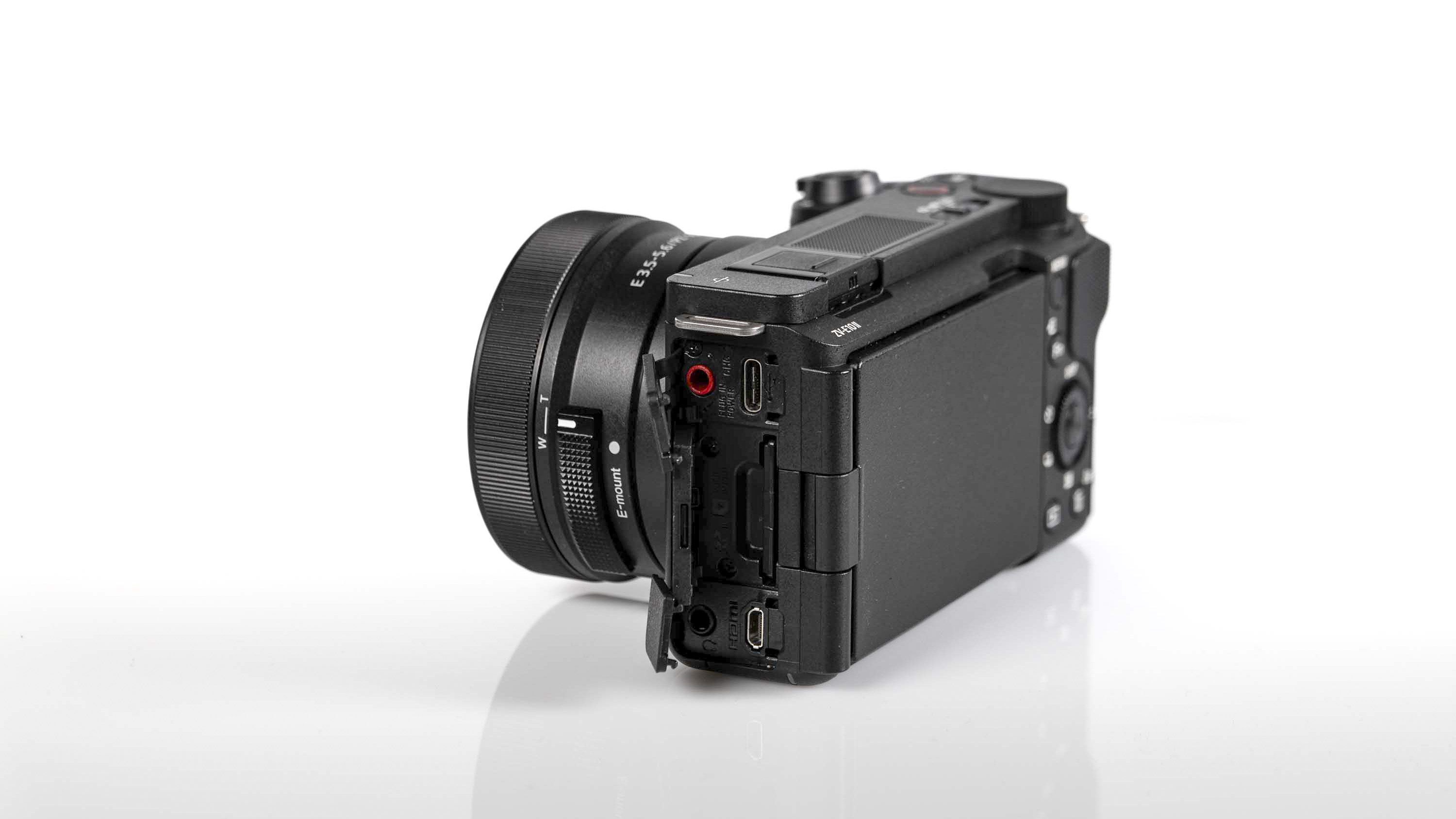

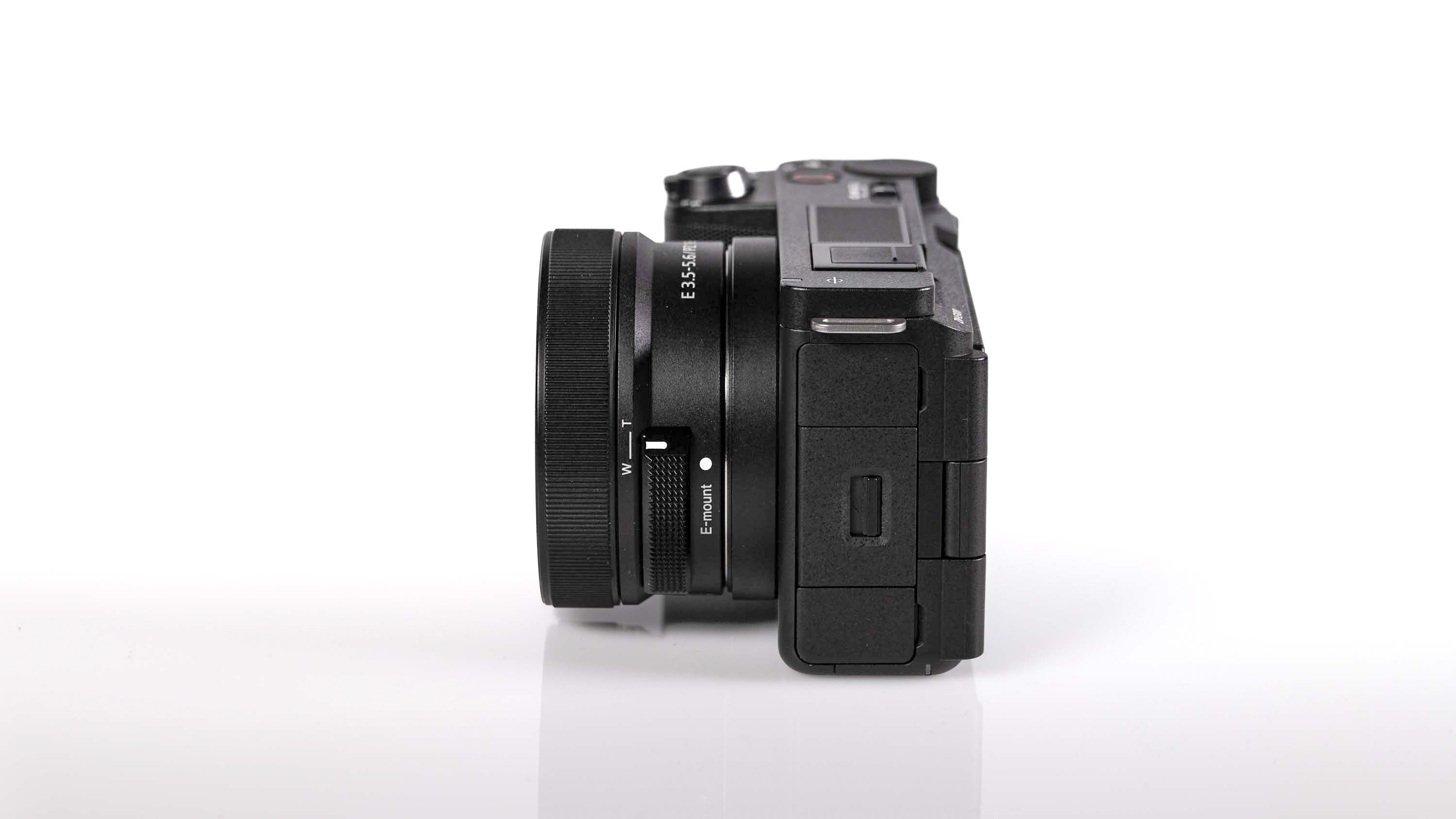
As you might expect, the autofocusing capabilities of this camera are second to none in its price range, and much better than those of rival APS-C cameras from competitors; the upgraded 759-point PDAF system finds subjects with ease and tracks them stubbornly. Like the ZV-E10, the newer model has a maximum continuous firing rate of 11fps, but with a more advanced AF system your ‘keeper’ ratio from mode shooting is going to be higher. Product focus mode was one of the standout features in this camera’s predecessor, and it works better than ever with this new model. When activated by pressing the trash icon, the camera will intelligently detect and seamlessly pull focus to a product when it's held up, then return to the person’s face when the product is lowered. It’s a unique feature that makes this an ideal camera for social media content creators who do tutorials, product reviews or promotions.
In terms of design, the ZV-E10 II is almost identical to its predecessor – the button layout is unchanged and the form factor will be familiar to owners of the older model, and while this camera being slightly larger and heavier, you couldn’t describe it as large or heavy relative to the competition. I like that it has a decent-sized grip, despite being super compact, and it feels great to hold and shoot with. Due to its size there’s no EVF, which may turn off some beginners who are more inclined towards photography – they might want to spend a little more and pick up the A6700.
Having only the articulated screen to compose shots on isn’t a problem, but it did become a bit of a struggle on sunny days, as I didn’t find it bright enough, even on its maximum setting. I also found the default Shooting Screen UI cluttered, but you can (and really should) make adjustments to the look and feel of it in the menu. To Sony’s credit, I love the fact that the whole UI rotates when you shoot vertically, making it a little bit easier to see your settings, whatever orientation the camera is in; it’s a small touch, but a nice one. Speaking of touch, the ZV-E10 II also adds direct touch as a means for changing settings and selecting subjects for the AF to track, touch functions not available on the ZV-E10. Again, it’s not a huge feature, but it significantly improves the functionality of the camera over its predecessor.



One of the ZV-E10 II’s USPs is its built-in three-way capsule microphone, which sits along the top of the camera. The unique design helps to isolate audio when the user is speaking to camera without external audio capture, whether holding the camera up vlogger-style or speaking from behind the camera. Sony says the latest version is “intelligent”, and should do an even better job of delivering clear audio. I didn’t have the previous model at the same time that I was testing the ZV-E10 II to compare the two, but I can confirm that the audio quality that’s recorded by the ZV-E10 II’s built-in mic system is good – it will be adequate for most quick shooting scenarios in public, and should certainly suffice for more controlled situations, such as shooting in a studio, although for the best results you’ll want to stay close to the camera, as it's not designed to pick up your voice from a distance. For higher-quality sound recording you have the option of inputting third-party audio sources through the 3.5mm socket. Alternatively, the camera’s digital multi-function hot shoe supports audio data transfer, allowing you to connect a Sony hot shoe mic like the ECM-G1 or a more advanced audio solution such as the Sony ECM-W2BT wireless microphone.
Sign up for breaking news, reviews, opinion, top tech deals, and more.
Live online content creators will enjoy the fact that the ZV-E10 II makes it easy to get connected and stream via a wireless network connection or USB-C, at up to 4K/25p with a max bitrate of 38 Mbps. Full HD streaming goes up to 60fps, and it’s also possible to record to the camera while streaming, which is handy for redundancy.
The ZV-E10 II is a camera that covers a lot of bases for content creators who have begun to experience the limitations of a smartphone and need reliability and quality in equal measure, but in a package that keeps things simple. If you can go without a viewfinder and can tolerate overheating limitations when shooting 4K video, the ZV-E10 II is well worth your consideration.

Sony ZV-E10 II: release date and price
- $1,100 / £950 / AU$1,849 body only
- Available from July 10, 2024
- Can be bought as a kit with the new Sony E PZ 16-50mm F3.5-5.6 II ($1,200 / £1,050 / Australian availability TBC)
The ZV-E10 II is available to pre-order from July 10th, 2024, with sales starting at the end of July 2024. It can be picked up for an RRP of $1,100 / £950 / AU$1,849 body only or for $1200 / £1050 with the new Sony E PZ 16-50mm F3.5-5.6 II as part of a kit. While there's no confirmation this kit will be available in Australia, the lens alone will set you back AU$599 when purchased Down Under.
That’s a pretty big price hike from the Sony ZV-E10.
- Price score: 3.5/5

Sony ZV-E10 II: design and handling
- Body is almost identical to previous model
- Features higher-capacity NP-FZ100 battery
- Vari-angle touchscreen
- Digital multi-function hot shoe
The Sony ZV-E10 II is a very compact camera, measuring 4.5 x 2.65 x 2.1 inches / 114.8 x 67.5 x 54.2mm and weighing 13oz / 375g. It’s almost 10mm thicker, a couple of mm wider and 32g heavier than its predecessor.
Sensor: 26MP Exmor R sensor APS-C sensor
AF system: 759-point phase-detect
EVF: None
ISO range: 50 to 102,400 (ISO 100-32,000 video range)
Video: 4K/60p 4:2:2 10-bit internal
LCD: 3.0-inch vari-angle touchscreen
Max burst: 11fps (continuous autofocus), 30fps burst
Connectivity: Wi-Fi 2.4GHz/5GHz, Bluetooth 5.0
Dimensions: 114.8 x 67.5 x 54.2mm
Weight: 375g (Body only with battery and card)
The increase in size is in order to accommodate the NP-FZ100 battery, the same battery used by Sony’s APS-C flagship model, the A6700, as well as most of its recent full-frame E-mount cameras. This also means the memory card slot has been shifted over to the left of the camera body, sandwiched between the microphone and USB-C port at the top and the headphone and micro-HDMI socket at the bottom. The door cover of the UHS-II card slot locks into place and is easy enough to unhinge, even if you’re wearing gloves.
Its 3-inch flip-out articulated screen swings out smoothly and slaps back into place with a reassuring clasp. However, I didn’t like the fact that when the display is flipped all the way out it doesn’t sit flat – it’s at a slight angle. This means the screen doesn’t directly face you when flipped forwards, and it makes composing straight images at extreme perspectives frustratingly inconsistent. Another slight annoyance for me is that I found that some of the buttons and the zoom toggle are too easy to activate by accident, which occasionally led to missed shooting opportunities when trying to capture unanticipated fleeting moments. I do really like the dedicated photo / video / S&Q mode switch at the top of the camera though.





A lot of useful and commonly used settings are buried within the menus, but fortunately Sony makes it relatively easy to curate a custom page under ‘My Menu’. Another positive is the fact that many of the camera’s buttons can also be customized for both photo and video modes, which gives you a lot of flexibility, and some time spent configuring your buttons and creating your own menu should pay dividends in improving your experience of using the ZV-E10 II. A final design touch that I’m a fan of is the inclusion of a red tally lamp on the front of the camera, just above the alpha logo, which turns on automatically when you press record. There’s also a red frame indicator that can be turned on and off to reassure you that you’re recording.
- Design score: 3.5/5
Sony ZV-E10 II: features and performance
- Best-in-class phase-detection autofocus
- Solid battery life
- No sensor-shift stabilization
- Overheats when recording 4K/60p
- Unique 3-capsule microphone array
The Sony ZV-E10 II stands on the shoulders of one of Sony’s most popular Alpha models ever, in the original ZV-E10 – and given that its predecessor doesn’t have a lot of competition, Sony arguably didn’t have to release an update this year. However, while there are a good few meaningful improvements overall, the ZV-E10 II isn’t perfect. Let’s start with the challenges.
As a compact camera with no fan, I wouldn’t expect the ZV-E10 II to deliver unlimited recording at maximum resolution and frame rates, and it turns out that it doesn’t. I found that the camera consistently overheated and shut down while recording 4K/60p video after 24 minutes, even with the screen flipped out which can help to disperse heat. I was able to get it to start recording again by rebooting the camera, and it rolled for another five minutes before stopping for a second time, then it would cut out repeatedly after a minute or two until it was left to cool down. When the overheating issues began the camera became very hot to the touch, and it wouldn’t function normally until it had cooled down; for reference the ambient room temperature was 70F / 21C. I experienced no overheating issues when filming in Full HD resolution.

Now that we’ve got the drawbacks out of the way, let me say that the ZV-E10 II shines when it comes to autofocus, although that’s a given when it comes to Sony cameras. The AF is quick and reliable, which means you can focus on capturing the content you want, whether it’s stills or video, and the camera will take care of the rest. It’s also much easier to shoot remotely and share your content, thanks to improvements Sony has made to the Sony Creators’ App experience. When paired, the ZV-E10 II has the ability to transfer content between the camera and your mobile device via 2.4GHz or 5GHz Wi-Fi. The process is quick, and far less frustrating than previous iterations of Sony camera/app file transfer that I’ve used.
When shooting Raw+JPEG you can get 30 frames at 11fps with AF-C in continuous burst mode, before buffering begins to kill your joy while you wait for the camera’s single UHS-II card to write – this is a camera that will be suitable for capturing brief bursts of action, but not extended sequences. If you want an easy way to slow down longer action sequences, shifting the camera into its dedicated S & Q (slow and quick) function is as simple as flicking a switch. The S&Q mode allows you to capture and view slow-motion video in camera, without sound. However, I’m disappointed that the ZV-E10 II maxes out 4K at 60fps, while its higher-end stablemates, with the same sensor and processor, offer up to 4K/120p.
I was impressed by the staying power of the ZV-E10 II. I could comfortably get through a day's photo and video capture thanks to the inclusion of the larger FZ-NP100 battery. It’s a cell that’s rated for roughly 550 shots, which is a lot for a camera in this class. The previous ZV-E10 was already a standout performer when it came to battery life, and the new model raises the bar further still.
- Features and performance score: 4/5
Sony ZV-E10 II: image and video quality
- Same 26MP sensor as pricier FX30 and A6700 models
- Much improved video codecs
- No in-body image stabilization means shakier video footage
The ZV-E10 II’s 26MP sensor delivers beautiful JPEGs in good light, and usable images in low light, while its raw files provide a good amount of dynamic range for pushing shadows and recovering highlights when needed.









In terms of its movie mode results, the introduction of 10-bit video, something that most of the competition offers, is a great benefit for people who have the time to grade their footage. Having greater color flexibility, including the addition of the S-Cinetone picture profile and log recording, opens up this camera for more professional uses, and I would happily use it as a B-roll camera, mixing in clips with footage from a higher-end Sony camera. At its best, 10-bit 4:2:2 4K/60p footage out of the ZV-E10 II, oversampled from its 6K readout, is reasonably gradable and looks clean when the ISO is kept below 6400. In video mode the ZV-E10 II has a maximum sensitivity range of ISO100 to 32,000, but beyond ISO6400 color shifting and noise starts to get distracting.




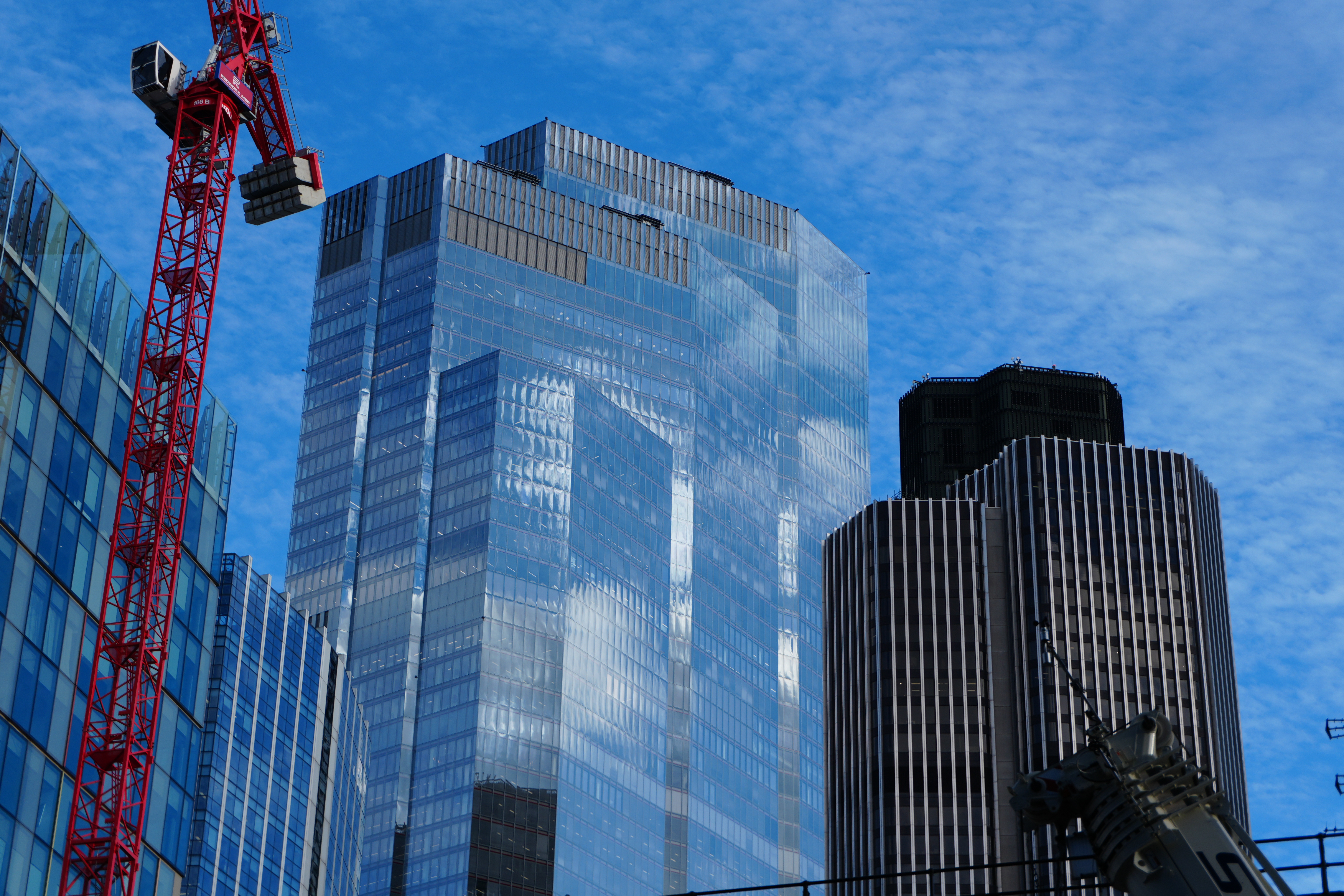
The lack of sensor-shift image stabilization is a miss here. However, when the camera is paired with an OSS Sony lens, footage is respectably stable, even if it can’t match the steadiness of a Lumix or Olympus alternative. Sony does have an ace in its hand with its Catalyst Browse desktop software though, and if you have the time and inclination you can achieve footage that’s stable enough to rival video captured with a dedicated gimbal.
- Image quality score: 4/5
Sony ZV-E10 II: testing scorecard
| Price | Pricier than the ZV-E10 and too close in price to better alternatives | 3.5/5 |
| Design | Improved design over the ZV-E10 but there handling could still be improved | 3.5/5 |
| Features & Performance | A mix of best-class features and frustrating limitations | 4/5 |
| Image and video quality | Outright image quality is excellent, especially for video | 4/5 |
Should I buy the Sony ZV-E10 II?
Buy it if...
You’re an all-round content creator
The ZV-E10 II is a highly capable stills and video camera with super-quick and reliable autofocus.
You’re mobile phone is holding you back
If your phone is no longer helping your content stand out from the crowd, the ZV-E10 II’s stunning 26MP sensor and access to the vast number of quality E-mount lenses will give you much better quality.
You want a pocketable B-cam
With 10-bit video and Log-profile recording, the ZV-E10 II is much easier to match with higher-end cameras, making it great for capturing B-roll or high-quality behind-the-scenes.
Don't buy it if...
You want to record long-form high-quality video
The ZV-E10 II will overheat if you record video at its best setting, and you’ll struggle to get much more than 20 minutes of 4K/60p footage in one sitting.
You’re more photography focused
The lack of an EVF will hamper your experience of taking photos, and the camera’s buffer is also quite limited, to just under three seconds at its max burst rate of 11fps when shooting Raw+JPEG. Opt for a camera that’s geared more towards photography.
You don’t need higher-end video performance
The original ZV-E10 shares many things with its successor, and can be picked up for a reasonable price. If you don’t need the new features, save your money and invest it in a great lens to accompany the older body.
Sony ZV-E10 II: also consider
Fujifilm X-S20
For an extra $100 / £100 / AU$150 approximately, you can pick up the Fujifilm X-S20. It is a big update of the X-S10 that boasts 6K video resolution, in-body image stablization, a dedicated vlogging mode, Fujifilm film simulations and ZV-E10 II-beating handling. It is a superb option for beginners and content creators looking for a camera to hone their skills and up their game, however it can't match the autofocus prowess of the ZV-E10 II.
Read our Fujifilm X-S20 review
Canon EOS R10
The Canon EOS R10 has long been our favorite beginner mirrorless camera and it costs the same as the ZV-E10 II. It's more of a hybrid camera for photo and video than it is a video-focused tool like the ZV-E10 II, but it still packs a punch for filmmakers. 4K 60fps is heavily cropped nor is there in-body image stablization, but you get decent autofocus and lovely handling with decent grip and viewfinder. However, if you're video-first creator then the ZV-E10 II is definitely the better option overall.
See our Canon EOS R10 review
How I tested the Sony ZV-E10 II
- I attended a pre-brief presentation, followed by one-week review period
- I paired the camera with the new Sony 16-50mm PZ OSS F3.5-5.6
- I connected the camera to the Sony Creators’ App
I had a short week with the ZV-E10 II, so my testing opportunities were slightly limited. However, I have experience with its predecessor, as well as the Sony A6700 and FX30, which share the same sensor, processor and battery as the ZV-E10 II, so I’m familiar with the capabilities and limitations of its core components.
The first thing I did when receiving the camera was conduct my endurance tests, which include battery run-downs and heat management. I set the camera up on a tripod in an ambient temperature environment of 70F / 21C, and left it filming continuously while connected to mains power and on battery power alone.
I took the camera out with me on a couple of walks and to a couple of daytime and evening events, using the Creators’ App to transfer and share images on the go. I performed sound-quality tests in a small studio environment, as well as in the street.
First reviewed July 2024
Jon Devo is a seasoned professional with 20 years of experience in photography and videography. After studying Journalism and Psychology at City University London in 2009, he transitioned into presenting and journalism. Jon is the founder of Devoted Creatives, a photo and video studio based in West London. He hosts two podcasts: Spotify’s Shot & Chaser and The Devoted Creatives Podcast. In addition to his podcasting work, Jon writes a monthly column, "Scanning Ahead," for Digital Camera Magazine and contributes for TechRadar.
